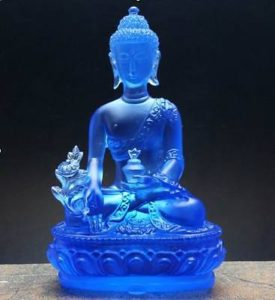When I try to ascribe a metacognitive narrative to the learning process at MUIH, I keep thinking of Ken Wilber’s model of states and stages.
Patricia Bombard, who maintains a personal site dealing with the evolution of consciousness, provides a succinct summary of the distinction. She writes, “Wilber uses the term ‘states’ to refer to personal experiences of conscious awareness. ‘Stages’ are labels that help us to identify or measure our inner growth and development” (Bombard, 2013). Wilber’s own writing clarifies the distinction between these concepts. He writes in Integral Vision: “Where states of consciousness are temporary, stages of consciousness are permanent” (Wilber, 2007).
States of experience are the essential substrate to our growth as clinicians. As we deepen our understanding, through the interplay of study and practice, the manifestation of our new competency in some of the most important aspects of healing work only become apparent upon reflection. By honoring the learning process we become able to develop competencies that are synergistically greater than what might be reflected in a series of discrete grading rubrics over the course of a semester.

As incipient clinicians practicing integrative medicine, the development of our healing presence is arguably a centrally important stage of our growth. One practice from Dancing with the Ten Thousand Things is to “Hold symptoms and illness as friends and guides. Be attentive to the soulful messages contained within them. Call us back to the whole of ourselves. Help us hear what me must hear” (Balles, 2004).
Within integrative medicine we are specifically walking the path of herbalists. One of our central diagnostic methods is the presentation of symptoms. Many of our core textbooks have custom indices that allow us to search for therapies based on the symptoms presented. Unfortunately the effective and safe use of whole plants as therapy is more complex than cross referencing charts.
One learning “state” where this is apparent is the second half of the literature review in HRB 605 where you develop a treatment protocol to promote wellness in your volunteer. At the beginning stages of that project when I was soliciting a list of symptoms from the client, the first round of herbs I selected would have, in hindsight, only had a palliative and transient effect on the client’s wellness. After the literature review, and based on feedback from faculty, I was able to deepen my understanding of the seemingly distinct and disparate symptoms, and consider them as guides on the road towards treatment. Then I was able to actually develop a protocol of herbal supplementation that resulted in a return to wellness that I frankly thought was unbelievable at first. The final protocol was vastly different from the list of herbs I initially thought would be beneficial for the client. This was possible because I was able to focus on the interplay of symptoms and the narrative they provided.
Being able to demonstrate this competency was only possible as a result of combining the different learning states from multiple classes, both in the HRB and ISCI tracks. It reflects a new stage of my relationship with plants as healers. When I started this program I couldn’t have anticipated how it would feel to be able to embody this healing presence and I consider myself lucky to have had the opportunity.
References:
Balles, T. (2004). Dancing with the ten thousand things: ways to become a powerful healing presence. New York; Lincoln, Neb.: iUniverse, Inc.
Bombard, P. (2013, April 14). The Integral Map: States and Stages of Consciousness | Conscious Evolution. Retrieved May 27, 2016, from https://consciousevolutionmemoir.com/2013/03/14/the-integral-map-state-and-stages/
Wilber, K. (2007). The integral vision: a very short introduction to the revolutionary integral approach to life, God, the universe, and everything (1st ed). Boston: Shambhala.